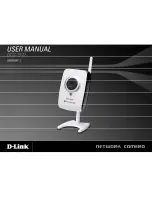
Leak detector type LAG 2000 A
6 / 28
part no. 15 071 53 e
The monitoring space must be designed so that the entire volume can be filled with leak
detector liquid, and that it is liquid-tight.
SUITABLE TANKS AND STORAGE MEDIA
The LAG 2000 A may be used only in connection with the following tanks:
Figure 1:
Tanks
pursuant to standard
above-ground, double-walled tanks
DIN 6616, DIN 6618-3, DIN 6623-2, DIN 6624-2,
OENORM C 2115, OENORM C 2116-3,
NBN I 03-004, EN 12285-2
underground, double-walled tanks
DIN 6608-2, DIN 6619-2, EN 12285-1
other tanks
in connection with a usability certificate issued by a
building inspectorate
*
*usability certificate issued by a building inspectorate (e.g. according to VbF, BetrSichV,
general building-authority approval, quality assurance RAL-GZ 998 storage tanks) or a
conformity certificate as a construction product according to the legal regulations to
implement directives from the European Community, which also include building inspectorate
and water law requirements and have the CE mark. The certificate must show that the
monitoring space is suitable for connecting a leak detector.
single-wall, unpressurised, above-
ground tanks with leak protection
lining
The leak protection lining must have a usability
certificate issued by a building inspectorate showing
that it is suitable for connecting a leak detector for
liquid systems.
single-wall, unpressurised, above-
ground tanks with leak protection
cladding
The leak protection cladding must have a usability
certificate issued by a building inspectorate showing
that it is suitable for connecting a leak detector for
liquid systems.
The restrictions as regards storage media in the construction standards or approvals
for tanks must be observed. For example:
DIN 6618-3: Density of the storage medium
ρ
M
≤
1
.
0 kg/l;
EN 12285-1 and
EN 12285-2 Type D Class A: Density of the storage medium
ρ
M
≤
1
.
1 kg/l
INAPPROPRIATE USE
All uses which exceed the Intended use:
•
e.g. operation with different operating media
•
changes to the product or parts of the product
•
installation in tanks which are not described and/or do not comply with the corresponding
legal or technical requirements
•
installation in several tanks
•
installation in double-walled piping
•
installation in pressurised tanks
•
failure to comply with the environmental conditions according to the TECHNICAL DATA
















































